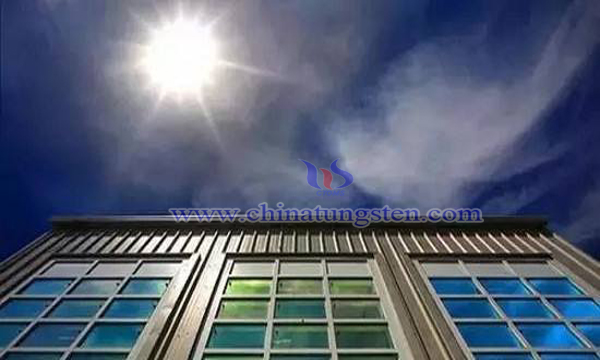Tungsten-based Oxide Electrochromic Films
- Details
- Category: Tungsten Information
- Published on Thursday, 30 May 2019 17:47
Tungsten-based oxide electrochromic film is a phenomenon in which the optical properties of materials change reversibly under the action of applied electric field. It can be applied to building intelligent windows, automotive anti-glare rearview mirrors, display devices and other fields. As a stable non-stoichiometric tungsten oxide, W18O49 can synthesize a variety of microstructures by various wet chemical methods, showing excellent performance in electrochromic, sensor and other fields.

For this reason, researchers have proposed a method to prepare tungsten-based oxide electrochromic thin films with high spectral range. By adding citric acid, the violet tungsten oxide electrochromic thin films with similar properties to high concentration W source were prepared from low concentration tungsten source. The main change is adding citric acid. The specific technical scheme is as follows:
(1)Cleaning FTO glass with acetone, isopropanol and ethanol;
(2)0.1 g citric acid was dissolved in 30 ml ethanol and stirred for 10 minutes to obtain a clear solution.
(3)Dissolve 0.1g WCl6 in clarifying solution and stir for 15 minutes to obtain transparent yellow precursor solution.
(4)The cleaned FTO glass sheet was placed vertically in the reactor, and the precursor solution filtered by 0.22 um organic membrane without the glass sheet was added. The W18O49-FTO glass sample was obtained after hydrothermal reaction at 180 ℃ for 10 hours.
(5)The samples of W18O49-FTO glass were washed with ethanol and water, dried at 60 ~℃ and heat treated at 200 ~℃ for 1 h to enhance the contact between W18O49 and FTO substrate.
The electrochromic test was carried out on CHI 600D electrochemical workstation and Cary 5000 ultraviolet-visible spectrophotometer. The W18O49 film was used as working electrode, Pt as opposite electrode, Ag/AgCl as reference electrode, and 1M AlCl3 as electrolyte. The loop performance was tested by chronoelectric method. The colouring state was applied with a voltage of -0.75V, and the fading state was applied with a voltage of 0.25V. The results show that the thin films with dense bottom and grass-like nanowires at the top can be prepared at low W source concentration. The adhering amount of the thin films increases. The spectral adjustment ranges are 63%, 66% and 69% at 633 nm, respectively. The spectral adjustment range is double that of the operation without citric acid.
- Tungsten Oxide Manufacturer & Supplier, Chinatungsten Online: www.tungsten-oxide.com
- Tungsten News & Prices of China Tungsten Industry Association: www.ctia.com.cn
- Molybdenum News & Price: news.molybdenum.com.cn
- Tel.: 86 592 5129696; Fax: 86 592 5129797; Email: sales@chinatungsten.com



 sales@chinatungsten.com
sales@chinatungsten.com